Bathroom mold is a common problem caused by constant moisture and poor ventilation. It not only looks unpleasant but can also damage walls, ceilings, and even your health. If left untreated, mold spreads quickly and becomes harder to remove. The good news is that with the right steps, you can get rid of bathroom mold and keep it from coming back. In this guide, we’ll cover effective methods to remove mold from your bathroom walls and ceilings, prevent regrowth, and create a cleaner, healthier space.
How to Remove Bathroom Mold
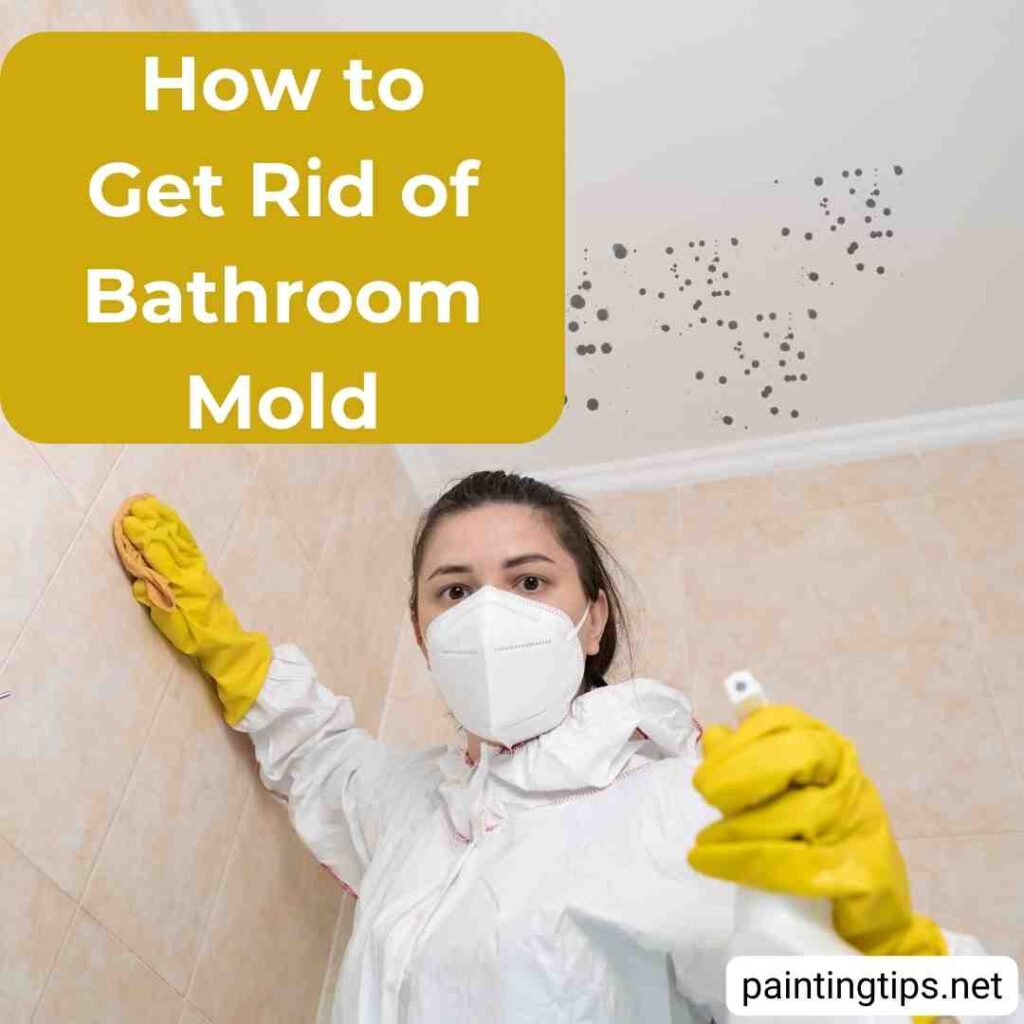
Bathroom mold often develops due to high moisture levels on walls and ceilings. To stop it from coming back, it’s important to address the causes of excess moisture, like poor ventilation or leaks. Mold can damage surfaces and pose health risks, particularly for those with allergies or breathing problems.
Effectively removing bathroom mold involves more than just scrubbing the surface—it requires addressing moisture sources and properly treating the affected areas. Follow these steps to remove bathroom mold thoroughly and prevent it from coming back:
1-Find and Eliminate the Source of Mold
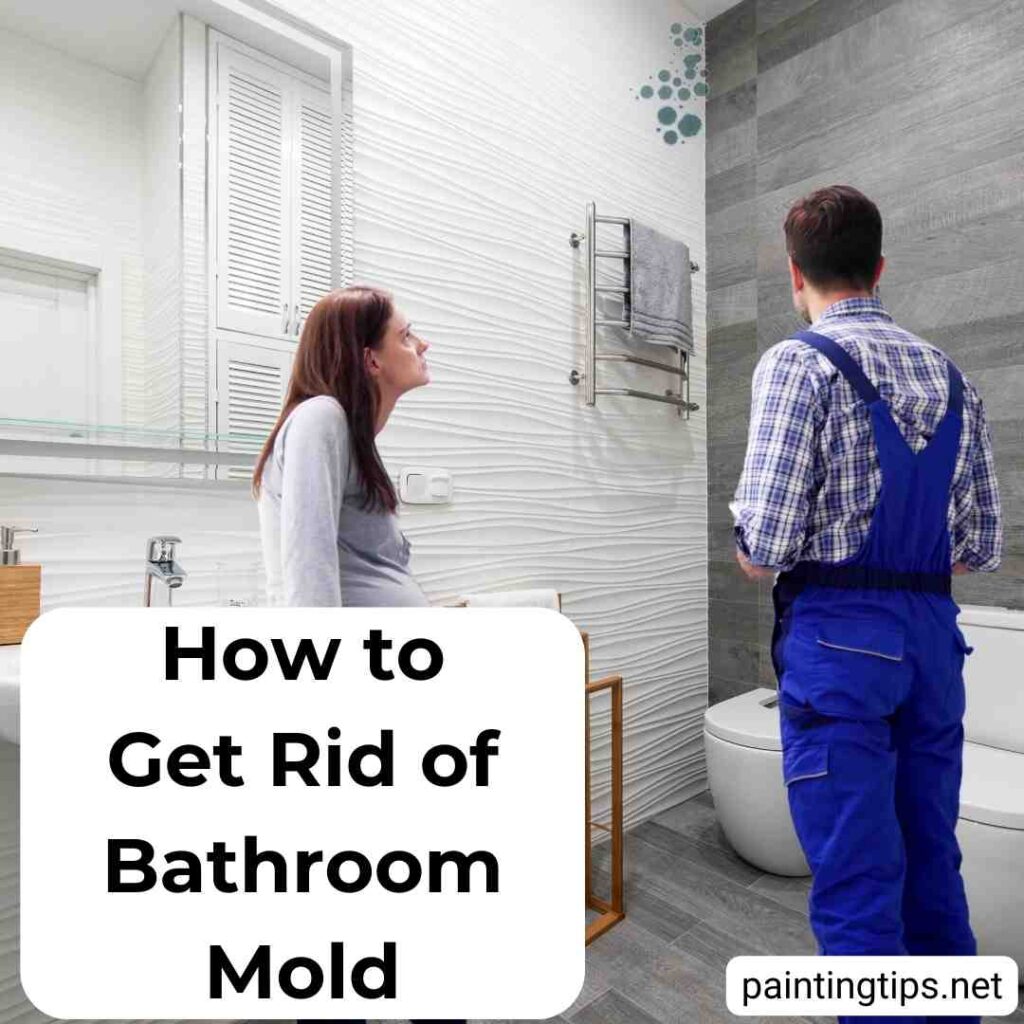
Mold thrives in damp environments. Check for water droplets on walls and ceilings after showers, and ventilate the bathroom properly. Use an exhaust fan if available. Plumbing leaks can also create moisture that promotes mold growth. Fixing leaks is essential before you start to clean bathroom mold. “Related article: Bathroom ceiling leaking water.”
2-Scrape the Mold Away
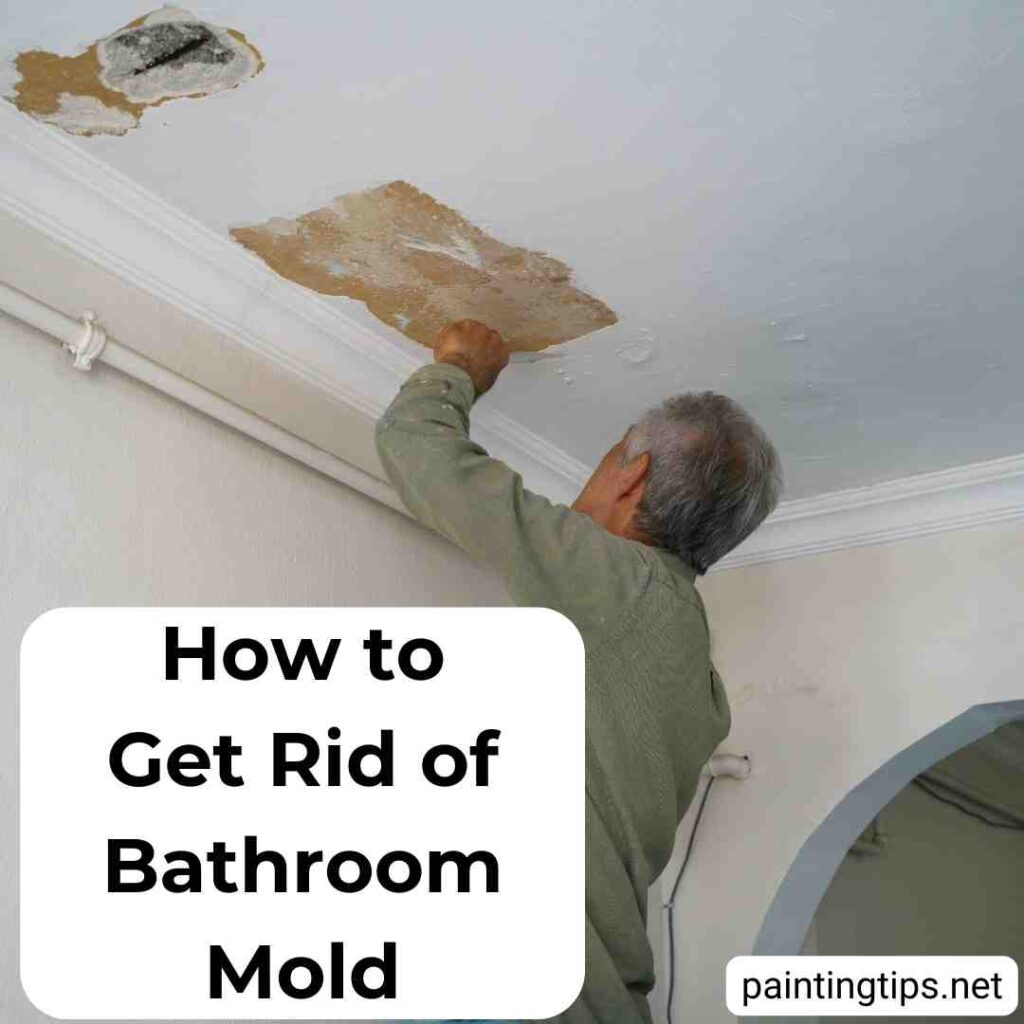
For mold that has spread on walls or ceilings, carefully scrape or sand it off. If the mold has soaked into the surface, lightly sanding the area may be required. After removing the mold, repair any damaged areas with wall filler or plaster, let it dry, and repaint. This is a critical step when you want to remove bathroom mold effectively.
3-Wipe Mold with Bleach
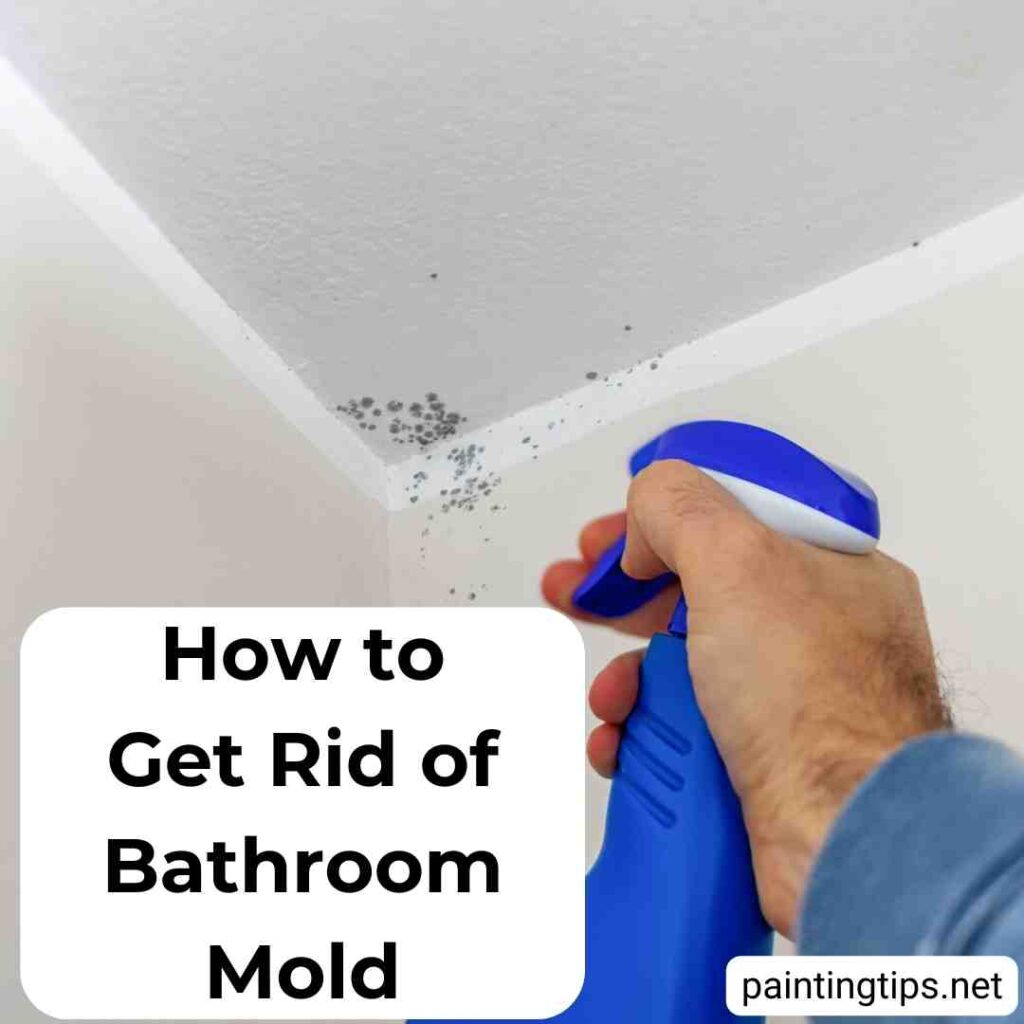
Combine one part bleach with three parts water, then apply the solution to the moldy area using a cloth or spray bottle. Let it sit for 20 minutes, then scrub gently. Repeat if necessary. This is one of the most common methods to clean bathroom mold. Avoid using a higher bleach concentration, which can damage paint. “Related article: How to fix peeling bathroom paint?”
4-Use White Vinegar
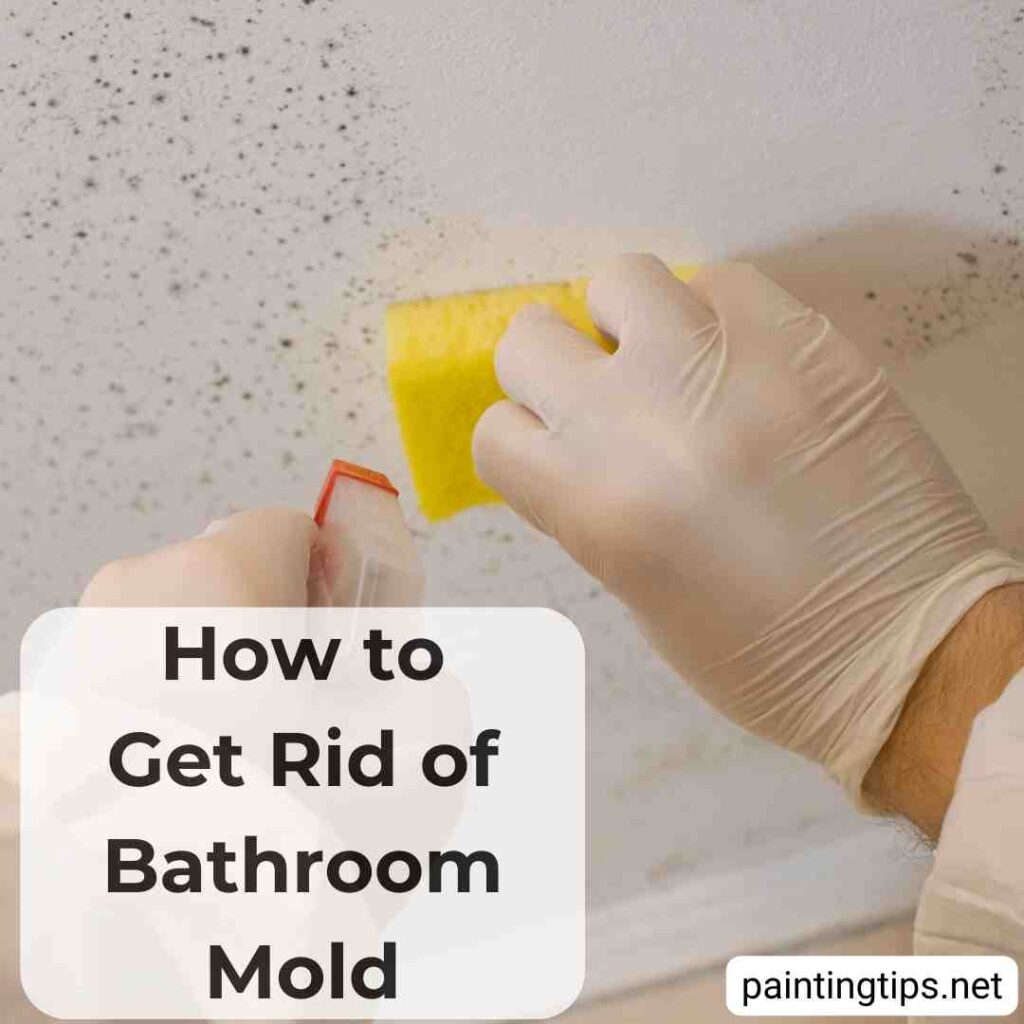
White vinegar kills mold spores and helps prevent regrowth. Pour vinegar into a spray bottle, lightly spray the moldy spots, and let it sit for around an hour. Repeat as needed. This method is excellent for anyone looking to remove bathroom mold naturally.
5-Apply Mold and Mildew Removers
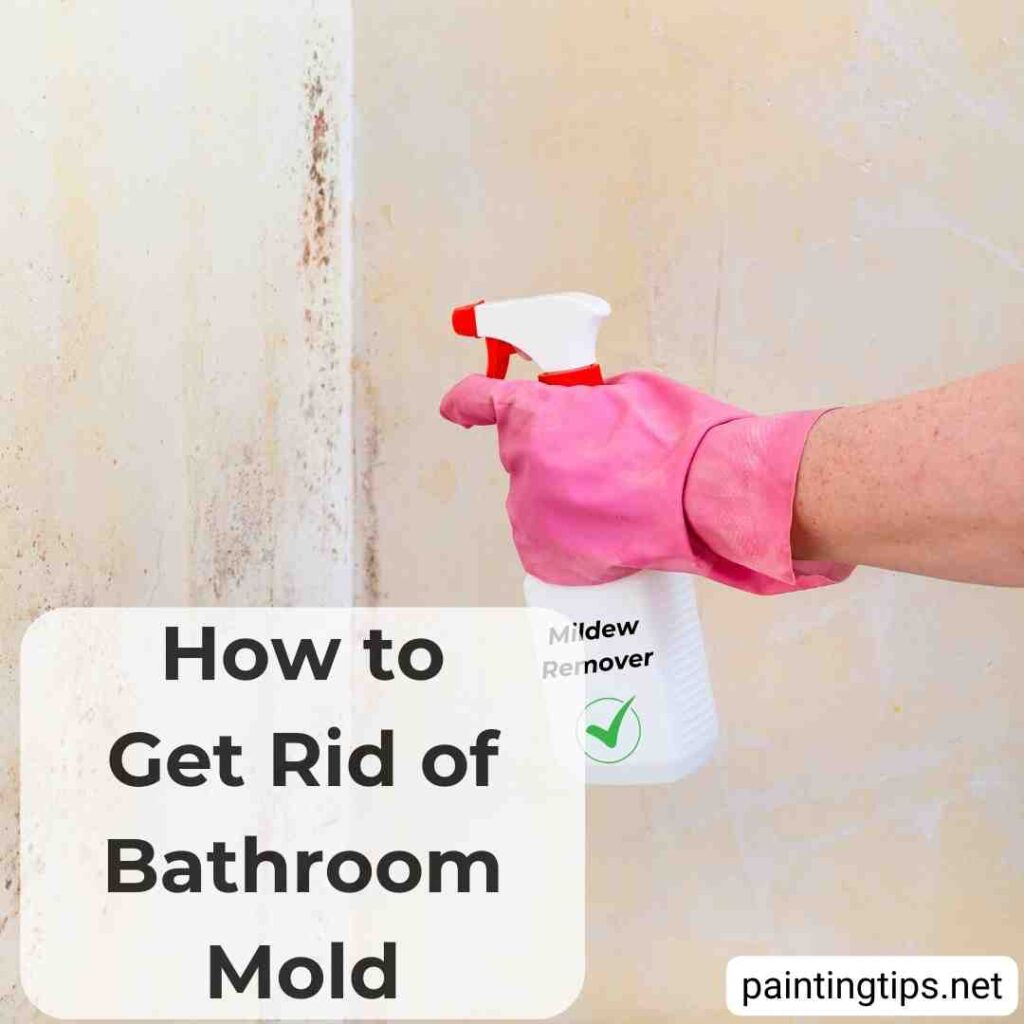
Commercial mold removers are convenient and effective. Spray the product on affected areas, wait 15–20 minutes, then wipe clean. For deeply penetrated mold, sanding before application is recommended. These products help clean bathroom mold quickly and thoroughly.
6-Paint with Mildew-Resistant Paint

After successfully removing mold from bathroom ceilings and walls, repaint the area with mildew-resistant paint. This will help prevent mold from returning. Always ensure the surface is fully cleaned before painting, as applying paint on untreated mold will not solve the problem. Using this step, you complete the process to remove bathroom mold permanently.
Additional Tips
- Ensure Proper Ventilation: Make sure the bathroom is well-ventilated and that moisture doesn’t linger on the walls.
- Avoid Silicone-Based Paints: Do not use silicone-based paints on bathroom walls and ceilings, as they can reduce air circulation and promote mold growth.
- Choose Special Ceiling Paints: Use paints specially designed for ceilings, as they don’t contain materials like silicone and Teflon, which can restrict airflow. “Related article: Best paint for ceilings.”
How Do I Get Rid of Black Mold in My Bathroom?
Ventilate the bathroom properly, then clean the mold with a bleach-water solution or white vinegar. Scrub the area, rinse, and apply mold-resistant paint to prevent regrowth.
What Kills Bathroom Mold the Best?
Bleach is highly effective against mold; mix one part bleach with three parts water for best results. For a gentler option, white vinegar works well. Commercial mold removers are also available but may be stronger. Always follow safety instructions when using them.
Is Bathroom Mold Toxic?
Yes, bathroom mold can be toxic. Mold spores can cause health issues, especially for those with respiratory conditions, allergies, or weakened immune systems. Black mold can release harmful mycotoxins. Always use gloves and a protective mask when removing mold to ensure your safety.
How Do I Stop Mould in My Bathroom?
To prevent mould, keep moisture levels low by ventilating the bathroom after showers. Use an exhaust fan, fix leaks, and prevent water accumulation. Clean and dry prone areas regularly, and apply mold-resistant paint on walls and ceilings.
What Kills 100% of Mold?
No product guarantees 100% mold removal, as mold can penetrate surfaces deeply. However, bleach is highly effective for killing surface mold. A bleach-water mix can kill spores and prevent regrowth. Strong mold removers also work, but addressing moisture sources is key to preventing future mold. Professional remediation may be needed if mold persists.